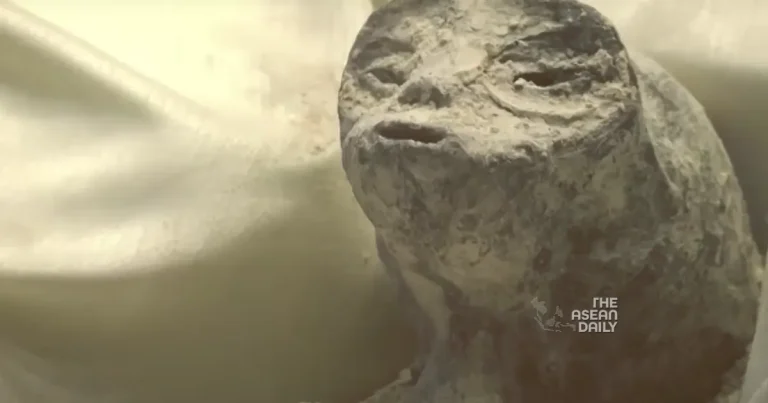15-9-2023 (MEXICO CITY) A UFO hearing held in Mexico’s congress, featuring the presentation of alleged remains of non-human beings, has ignited swift international backlash. Critics have branded the event a “stunt,” and officials in Peru, where the purported specimens were initially discovered, have raised questions.
Renowned Mexican journalist and long-time UFO enthusiast, Jaime Maussan, took the stage during the Tuesday hearing, showcasing two minuscule “bodies” enclosed in display cases. These specimens, boasting three fingers on each hand and elongated heads, were claimed to have been found in Peru back in 2017, with Maussan asserting they were unrelated to any known terrestrial life forms.
Images from this historic congressional hearing, the first of its kind in Mexico, triggered both global curiosity and substantial skepticism.
Former US Navy pilot Ryan Graves, who also participated in the hearing to share his personal encounters with “unidentified anomalous phenomena” or UAP, expressed strong criticism regarding the presentation. He conveyed his disappointment, stating, “Yesterday’s demonstration was a huge step backwards for this issue,” on the X social media platform, formerly known as Twitter.
Graves had previously taken part in US Congressional hearings on UAP in July, where he emphasized that sightings of unexplained phenomena in airspace were “grossly under-reported.”
During the presentation, Maussan revealed that the specimens were recovered near Peru’s ancient Nazca Lines. Mexico’s National Autonomous University (UNAM) reportedly carbon-dated the samples, concluding that they were approximately 1,000 years old and belonged to an entirely non-terrestrial species.
However, it’s worth noting that similar discoveries in the past have ultimately turned out to be the remains of mummified children.
Peru’s Culture Minister, Leslie Urteaga, has expressed skepticism regarding these claims, stating that no scientific institution in Peru had identified the remains as non-human. She also questioned the circumstances under which the specimens left Peru and alluded to a criminal complaint from the Ministry of Culture against individuals associated with Maussan and his team.
“I am going to ask for information to see what has happened … about the removal of pre-Hispanic objects because I understand they are part of pre-Hispanic bone remains,” she added.
As of the time of reporting, Jaime Maussan has not issued a response to these allegations.
UNAM, in a statement republished on Wednesday (which they initially issued in 2017), clarified that their National Laboratory of Mass Spectrometry with Accelerators (LEMA) was solely involved in determining the age of the samples. UNAM declined Reuters’ request to access the complete study results or to interview the researchers involved. Furthermore, they did not disclose the age determined by their study.
In a separate press conference on Thursday, NASA officials addressed questions about the Mexican presentation while simultaneously releasing their own report on recommendations for enhancing the Pentagon’s ability to detect and examine UAP.
David Spergel, former head of Princeton University’s astrophysics department and chair of the report, acknowledged not being aware of the nature of the samples but emphasized the importance of transparency.
“If you have something strange, make samples available to the world’s scientific community, and we’ll see what’s there,” Spergel urged.




